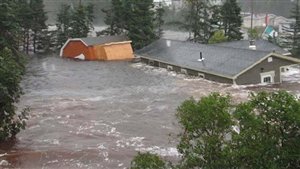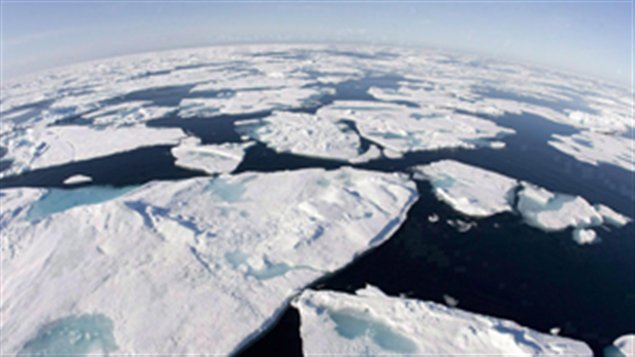The Intergovernmental Panel on Climate Change (IPCC) recently released the first part of its fifth major report on global climate. It indicates that global warming and the resultant changing climate around the world are largely the result of human activity.
It also notes that regions further from the equator will see greater warming than the average. This will also mean more extreme weather events, such as more violent thunder storms, longer heat waves and droughts, more forest fires, more flooding, snow, hail and so on.
Gregory Flato, PhD, is an Environment Canada scientist in Victoria, British Columbia and manager of the Canadian Centre for Climate Modelling and Analysis. He was also the Coordinating lead author of the IPCC ch-9 on climate model evaluation…
ListenIn Canada, on average, temperatures increased by more than 1.3 degrees Celsius between 1948 and 2007, a rate of warming that was about twice the global average.

Mr Flato says the difference between this report and its predecessor is that advances have been made in the science, in improved understanding and analysis of climate and the evidence of changing climate and human influence is stronger than ever.
- Human influence on the climate system is clear. This is evident from the increasing greenhouse gas concentrations in the atmosphere, positive radiative forcing, observed warming, and understanding of the climate system.(2-14)
- Human influence has been detected in warming of the atmosphere and the ocean, in changes in the global water cycle, in reductions in snow and ice, in global mean sea level rise, and in changes in some climate extremes (Figure SPM.6 and Table SPM.1). It is extremely likely that human influence has been the dominant cause of the observed warming since the mid-20th century. {10.3–10.6, 10.9{2–14} IPCC Summary for Policymakers

He also says with improvements there is now a high degree of confidence in the climate models.
The 2,216 page report shows that higher lattitudes and higher altitudes will see greater affects from warming than lower lattitudes, Thus mountain glaciers and polar ice sheets will continue. Data shows that average temperatures in Canada between 1948 and 2007 were about twice the global average. Warmer temperatures tend to produce more violent weather patterns
Gordon McBean of the Centre for Environment and Sustainability at Western University in London, Ont authored a report for the Insurance Bureau of Canada called “Telling the weather story”.
He says while there is debate about the role of climate change in the massive floods in Calgary and the surprise huge and sudden flood in Toronto, “we will see more of these kinds of events”.
He added that people around the world are already seeing the impact of extreme weather. “In terms of lost lives and injuries, displacement and devastation . . . the costs of these losses are incalculable”, he said.
There have already been significant changes in the Arctic where permafrost is melting causing infrastructure damage, Combined with less sea ice and more violent storms, river and ocean shorelines have been eroding.
In addition to warming and ice loss at the poles, the IPCC report also says that warming near the Great Lakes, which lost more than 70 per cent of their ice cover between 1973 and 2010, could be as much as 50 per cent higher than what is predicted globally.
- It is very likely that the Arctic sea ice cover will continue to shrink and thin and that Northern Hemisphere spring snow cover will decrease during the 21st century as global mean surface temperature rises. Global glacier volume will further decrease. {12.4, 13.4}
- Global mean sea level will continue to rise during the 21st century (see Figure SPM.9). Under all RCP scenarios the rate of sea level rise will very likely exceed that observed during 1971–2010 due to increased ocean warming and increased loss of mass from glaciers and ice sheets. {13.3–13.5} (IPCC Summary for Policymakers)
With the release of this report, scientists and environmentalists say it’s a call to take serious action to reduce greenhouse gas emmissions.
The IPCC, created in 1988, delivers what are considered the authoritative assessments of global climate data, An assessment has been released every six or seven years.
IPCC working group 1 Summary for Policymakers
IPCC-phase 1 report 5th Assessment Chapter-14
Panarctic study- changes to climate
Arctic Ocean-acidification from warming







For reasons beyond our control, and for an undetermined period of time, our comment section is now closed. However, our social networks remain open to your contributions.